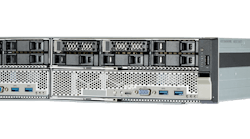Massachusetts-based Stratus Technologies on Nov. 1 announced the launch of its Stratus ztC Endurance family of three fault-tolerant computing platforms.
The platforms introduce fault tolerance that the company said delivers seven nines (99.99999%) availability and performance gains through the latest generation of technology components, including fourth-generation Intel Xeon scalable processors.
“Our new family of compute platforms continues our unmatched availability and ease-of-use with 99.99999% availability, a modernized system architecture, and the performance to support our customers’ growth,” said Dave Laurello, president of the Stratus Technologies business unit, Intelligent Platform Solutions, SGH.
See also: Cybersecurity stakeholders praise AI executive order—but say it’s just a start
“The ztC Endurance platform is the result of years of planning, development, and testing,” said Dara Ambrose, vice president of products and solutions for Intelligent Platform Solutions, SGH. “The platform design is based on the analysis of more than 100 million hours of computing runtime across thousands of customers. With this new ztC Endurance platform, we’ve delivered a fault tolerant solution that eliminates compromises in performance, cost, serviceability, and manageability when deploying and maintaining application availability.”
In today’s digital-first, data-driven world, OT and IT teams require solutions that meet both teams’ efforts to enhance operational efficiency, improve system security, and ultimately drive business growth, according to a Stratus release.
OT leaders are investing in automation to manage complex processes, while IT leaders are seeking modern technology that is easily serviceable and cost-efficient. OT and IT teams demand reliable and secure solutions designed for today as well as tomorrow. Industry research forecasts that edge IT workloads will grow up to 28% through 2026 as a result of this market demand, according to the company release.
“Even during beta testing, the system completely exceeded my expectations,” said Joel Boyer, technical authority at systems integration and engineering services company TIGA and a longtime Stratus customer. “The console commands were intuitive, easy to use, and could be simply navigated.”
Added Dave McCarthy, research VP of cloud and edge infrastructure services at IDC, a provider of market intelligence, advisory services and events: “Intelligent, predictive health management, continuous availability, and data visibility is crucial for companies looking to make the next move on their digital transformation journey. Edge computing is the foundation for this next step, and Stratus is showcasing what is possible for companies seeking next-generation solutions and performance.”
See also: Why manufacturers' data is best analyzed at the edge
With the ztC Endurance, Stratus has set out to eliminate system downtime and data loss (including in-flight data) through built-in fault tolerance that is transparent to standard operating systems and hosted applications, according to the company. It does not require additional scripting or modification and provides proactive health monitoring. This combination enables OT and IT teams to run mission-critical applications and complex software stacks without needing to be server experts, Stratus said.
The ztC Endurance platform introduces intelligent, predictive fault tolerance through the Stratus Automated Uptime Layer with Smart Exchange, which tracks and targets a wider range of failure points. The platform also ensures data integrity and protects against loss of in-flight application data with 99.99999% application system availability and embedded hardware and software security features, along with the ability to run third-party cybersecurity applications to protect IT and OT assets.
The series comes in three configurations: Model 7100, designed for large data centers and larger plants; Model 5100, for remote offices and medium plants; and Model 3100, for shop floors and smaller plants.


